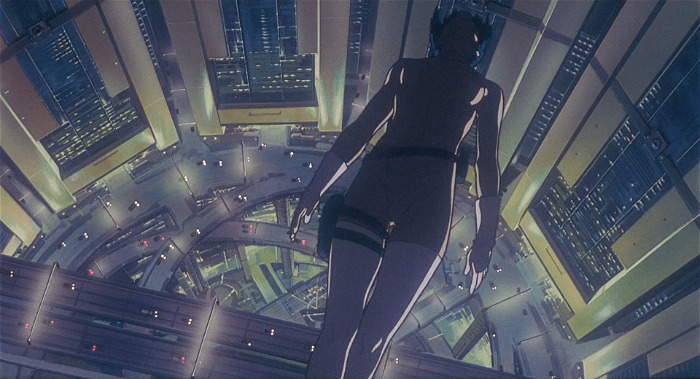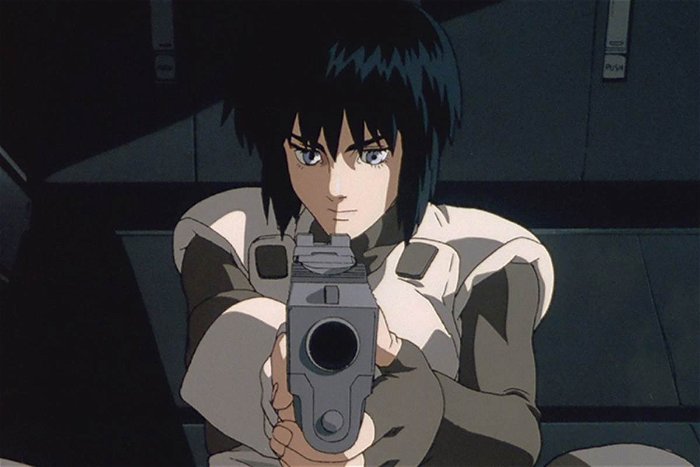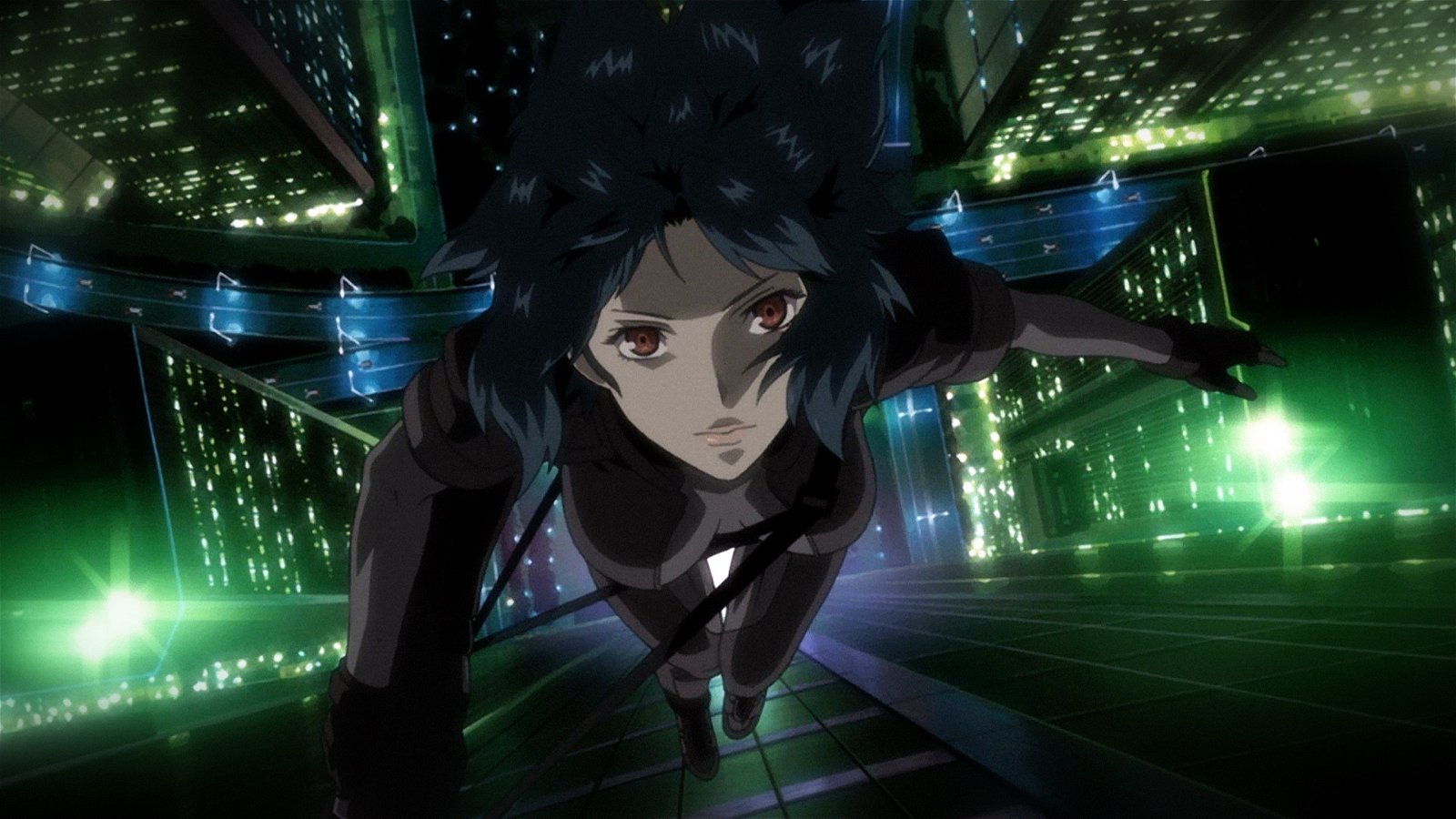The 2017 moviegoing audience is a world removed from the 1995 Internet-boom generation that Mamoru Oshii’s Ghost in the Shell animated classic first released to, and it’s two worlds removed from the 1989 steampunk-curious readership of Masamune Shirow’s original manga. But the Hollywood premiere of Ghost in the Shell is drawing near, and soon the 2029 cyberpunk metropolis of New Port City and the slow pace of the GITS franchise will clash with the fast-paced palette of modern times—and judging by the recent trailers, the creators of the new movie are very aware of that fact. As expected for a Hollywood anime-to-live-action conversion, the Internet has been rattling with chatter about whether or not Hollywood will miss the philosophical underpinnings of the original work. The talk is not entirely unfounded, considering the previews show what appears to be a movie that uses a more mainstream conspiracy plot and amnesia-driven identity crisis unfamiliar to eyes of Ghost in the Shell fans who know the work as an exploration of consciousness and Cartesian duality.

Don’t go running away from the jargon just yet, for the Ghost in the Shell franchise as a whole isn’t as snobbish as it may at first seem—the property is a bit complicated in that the most famous entry in the series, the 1995 film by Mamoru Oshii, takes its own creative liberties with Masamune Shirow’s original manga. And so, whether or not the new movie is “true” to the original work might not even be important, considering the spirit of iteration of the franchise. On top of that, it can be unreasonable or perhaps naive to expect a Hollywood recreation of GITS, which would require a high-budget and high return to even justify, to focus its resources on appeasing the few who’ve actually managed to decode the high- ideas of the franchise. One could even feel sorry for Paramount for vanguarding a film that will certainly be shelled by the artillery of a community known to have its own flavour of snobbery. On the other hand, regardless of right or wrong, being equipped with a little knowledge on the subject can go a long way to helping viewers appreciate the new movie and understand the contemporary dialogue surrounding the film
The “Bound to Disappoint” Mindset
“Everything they told you was a lie,” says a mysterious hooded man in the trailer to the new GITS, somehow managing to reverberate just about every mainstream conspiracy plot in a single un-ironic drone. This, along with the action-heavy content of lead Scarlett Johansson’s Black Widow-like acrobatics—leaving millions of beautiful CGI pieces of shattered glass in her wake—clearly proves there is a spectacle-flick bent to the adaptation. Even the movie’s self-proclaimed theme of identity in a technologically overloaded world presents its turmoil through an action-packed plot. It’s more of a “who-dun-it” than a “who-am-I.” It’s what imbues the chatter online with the “this movie is bound to disappoint” mentality. Criticisms litter YouTube comments, and YouTubers themselves like Alachia Queen describe an exclusive 15-minute preview as “exposition, exposition, doctor’s making exposition, a guy at the business table is making exposition—leading into action—more exposition.”

It doesn’t help that director Rupert Sanders seems to misinterpret the original movie’s philosophical ponderings. In an interview at the film’s premiere in Tokyo, he described, “One of the points of the anime is trusting in technology.” But technology in the film wasn’t the end goal, but more of a vehicle for getting to larger ideas of consciousness and identity. And not the “identity” within a modern world that the new movie is exploring—the idea of “identity” that Oshii portrayed in the 1995 film had more to do with the concept of the mind. But some kudos can still go to Sanders, because at the very least, he said that although the new movie will be made for a mainstream audience in mind, he wants to preserve some of the philosophical tone of the originals. Perhaps the new film is a bit of a candy apple. Despite having a similar core of its original product, you don’t exactly eat it for its nutritional value. That might not be such a bad thing. After all, it’s a wonder that anyone would really call more Ghost in the Shell a bad thing.
What Is “Ghost in the Shell” Suppose to Be, Anyways?
The concept of the “ghost” was borrowed by Masamune Shirow from an essay on structuralism called The Ghost in the Machine, by Arthur Koestler. The essay is a response to Rene Descartes’ idea of dualism (what people call “Cartesian Duality”) that states that the mind is separate from the body. The Ghost in the Machine argues that the mind and body are parts of a whole, and that the experience people call the consciousness is a result of the synergism and coaction of a person’s separate elements—to try to do the essay justice in a single sentence. The idea manifests in the original manga as readers question whether the nearly completely robotic Major Matoko Kusanagi can be considered “alive” and “conscious.” It’s something that she ponders herself.
Oshii took the idea to a higher aesthetic plane with his 1995 animated movie when he decided to eschew the sexy, expressive, and youthful Kusanagi for a very android-like, emotionless one. They aged her characterization to fit with the maturity that comes with introspection, and seamlessly blended her tone to the rest of the rainy city. Oshii then added another literary influence to the mix in his sequel nine years later. A quote from The Future Eve by symbolist science fiction writer Auguste Villiers de l’Isle-Adam is featured in the title card for Innocence, the second Ghost in the Shell animated movie by Oshii. The title card reads, “If our gods and hopes are nothing but scientific phenomena, then it must be said that our love is scientific as well.” It alludes to a thesis Oshii investigates throughout his two movies—that perhaps “humanness” isn’t restricted to human beings. He begs the question, “if androids can think, feel, wonder, aren’t they ‘alive’ as well?”

In the end, expecting the new film to focus on the notions of consciousness and A.I. as they relate to evolution may be a futile desire. But, although there is a lineage of what “Ghost in the Shell” is supposed to be, there is also a lineage of iteration; that the name has become greater than any one of its parts. Recent installments like Arise and The New Movie have already embraced an action-oriented approach, so a Hollywood big-budget production of the IP wouldn’t necessarily stomp on grounds previously untouched. Director Sanders even humbly refers to the new movie within the ongoing legacy within the franchise as simply “the next part of that chapter.”
The 2017 Movie Will Live Up In Some Ways, Won’t in Other Ways
At the risk of sounding like a broken record, it may always be best to see the bright side of things. Oshii himself says that the movie will at least “become the most gorgeous work made in Ghost in the Shell yet.” Opening onto the vista of New Port City, it is clear here that the movie brings a visual life of its own. It’s a far cry from the rainy Hong Kong inspired city of the original animation. There’s a clean aesthetic to it. It’s holographic and porcelain; circuitous and ultramarine—it’s very new.
The visual feast is the magic of Weta Workshop. The special effects company used an impressive amount of practical effects that Tested’s Adam Savage calls a miracle. The detail and clockwork of a mechanized geisha’s head developed by the Ghost in the Shell team rings of the heart of a true work of science-fiction. The team really seems to have crafted a world that leans forward over the cutting-edge of the cutting-edge. The movie’s blend of panoramic CGI and textural practical effects capture’s something utterly modern—something utterly 2017. And there’s a Zen about the synergy of it—it truly is gorgeous. Perhaps the spirit of Ghost in the Shell may really be found in the practical effects department. So if the movie has been reduced to a “go see this in IMAX” CGI-fest, then at least let it shine at what it does best. It’s only a shame that the movie isn’t as impressive sonically. Paramount decided to forgo Kenji Kawai’s hypnotic soundtrack of the animated movie altogether for what some may refer to as “generic cinematic music.” That being said, when the Weta Workshop’s geisha walks down the hallway in the trailer, it’s hard to miss that quiet but familiar chiming in the background.

“If this is to be a remake of the anime, I don’t think it’s necessary to remain faithful to the way things were expressed in the anime. The director should exercise his directorial freedom as much as possible. If he doesn’t do so, there would be no point in remaking it” says Oshii in an interview with IGN about his thoughts on the film.
Now if that isn’t a blessing for Rupert Sanders to do his thing, there’s no hope for pacifying angry fans. But for everyone else, each piece of work in the franchise will live on as a separate entity. They will go on as pieces to a greater whole called Ghost in the Shell, and their ideas will drift on in the collective mind like a spectre.




